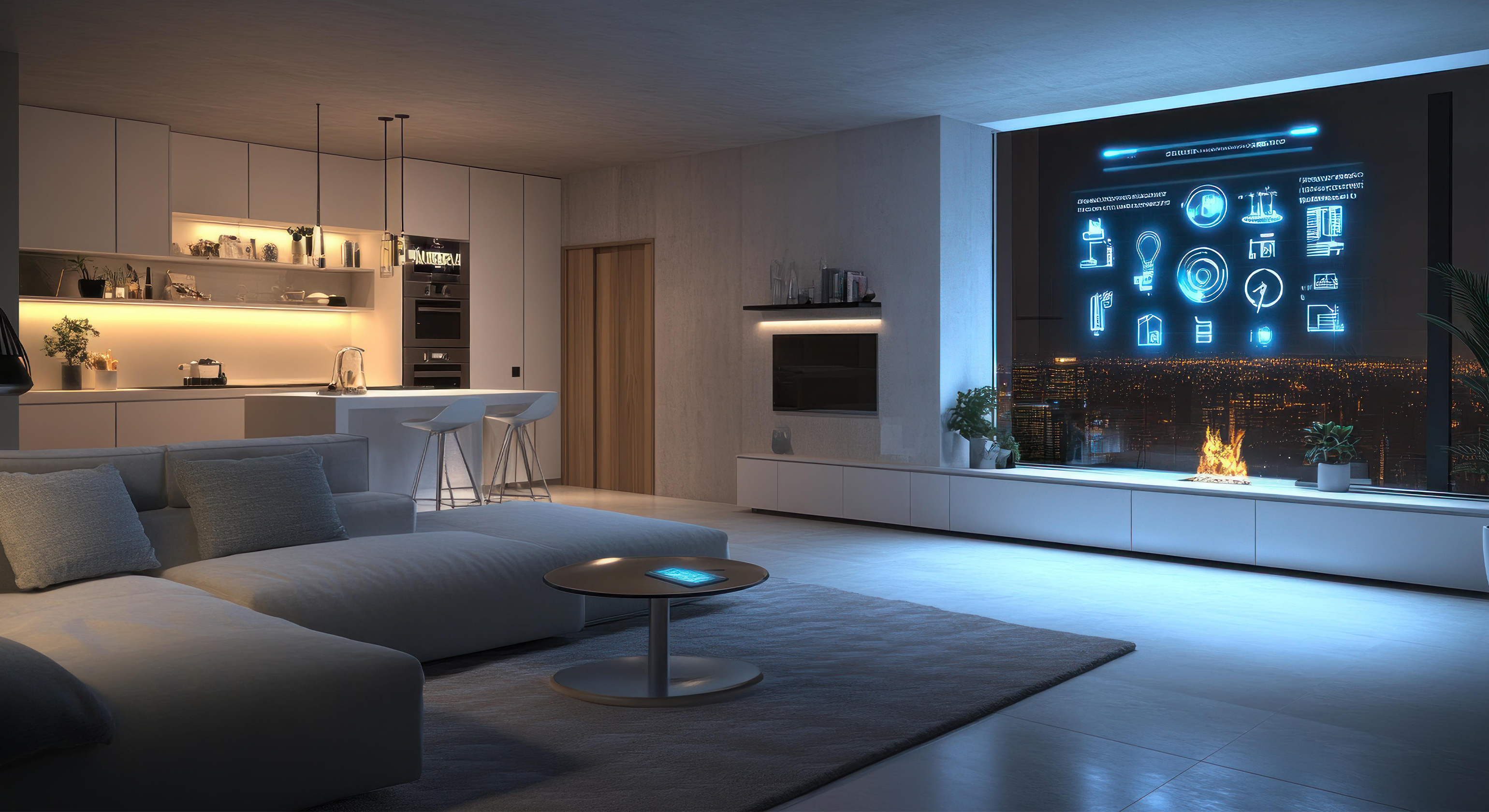
Get a Quote: Estimation Without any fee or obligation
Get a Quote: Estimation Without any fee or obligation

What if your home could think, adapt, and even predict your needs before you realize them? Home automation has moved beyond convenience to become an integral part of modern living. As we step into 2025, smart homes are evolving rapidly, driven by technological innovation and the global push for sustainability. From energy efficiency to AI-driven personalization, the future of home automation promises a perfect blend of innovation and environmental responsibility to redefine our relationship with living spaces.
What is the Future of Home Automation in 2025?
The future of home automation is not just about gadgets but about creating smarter, greener, and safer spaces. Let’s explore the top trends shaping the industry this year and beyond.
1. AI and Machine Learning: The Brain Behind Smart Homes
Artificial intelligence (AI) and machine learning (ML) are revolutionizing how we interact with our homes. These technologies enable devices to learn from user preferences and behaviors, creating a personalized and intuitive experience.
For instance, AI-powered thermostats like Nest analyze usage patterns to optimize heating and cooling, reducing energy consumption while ensuring comfort. By 2025, the global AI in IoT market is projected to reach $26.2 billion, emphasizing its growing significance in home automation.
How AI Transforms Smart Homes: - Homes that adjust lighting, temperature, and even music based on your daily routine. - Smart cameras and doorbells equipped with facial recognition to enhance security. - Energy efficiency powered by machine learning algorithms that predict energy usage and optimize consumption.
2. The Rise of Sustainable Smart Homes
Sustainability is no longer a luxury—it’s a necessity. With rising global energy demands, smart homes are stepping up to the challenge by integrating energy-efficient technologies and renewable energy sources.
Mutual capacitive touch, in contrast to self-capacitance, relies on capacitance variations between two electrodes. The transmitting electrodes (Tx) and receiving electrodes (Rx) are the two sets of electrodes used in this system. The electric field between these electrodes is disrupted when a user's finger or another object comes into contact with them, changing the capacitance value. Projected capacitance is another name for mutual capacitance. Mutual capacitance does, however, have certain drawbacks, such as measurement noise that is typically higher than self-capacitance. Several manufacturers offer capacitor switches as integrated circuits for commercial use. Additionally, these gadgets can be utilized as a short-range.
Key Features of Sustainable Smart Homes:
-Smart Lighting Systems: Reduce energy consumption by up to 40%, according to the International Energy Agency (IEA). -Automated Energy Management: Systems that monitor and adjust energy use in real time. -Solar-Powered Devices: Renewable energy integration for a greener future.
3. Voice Control and Natural Interaction
Voice assistants like Amazon Alexa, Google Assistant, and Apple’s Siri have become essential tools for managing connected devices. With advancements in natural language processing (NLP), these assistants are becoming more intuitive and interactive.
Benefits of Voice Control in Smart Homes:
- Hands-free convenience for controlling lighting, appliances, and entertainment systems. - Enhanced accessibility for elderly and differently-abled individuals. - Meaningful interactions that go beyond simple commands, making the experience more human-like.
4. Comprehensive Home Security Systems
Safety remains a cornerstone of home automation, and advancements in smart security systems are making homes safer than ever. AI-driven features now allow these systems to differentiate between real threats and benign activity, reducing false alarms.
Innovations in Smart Security:
- 24/7 Video Monitoring: Real-time video feeds accessible from anywhere. - Biometric Authentication: Fingerprint and retinal scanning for secure access. - AI-Powered Threat Detection: Identifies intruders and alerts homeowners immediately.
Brands like Ring and Arlo are already offering smart doorbells that let you interact with visitors remotely. By 2025, expect even more sophisticated solutions, ensuring both security and peace of mind.
5. The Connected Ecosystem: Interoperability is Key
The future of home automation lies in seamless integration. Interoperability—the ability of devices from different manufacturers to work together—is becoming increasingly important.
How Interoperability Enhances Smart Homes:
- Standards like Matter ensure devices can communicate effectively, regardless of brand. - Smart refrigerators that notify voice assistants to add groceries to your shopping list. - Thermostats that sync with weather forecasts to pre-adjust temperatures.
By creating a connected ecosystem, home automation reduces the need for manual intervention, making daily life more efficient and intuitive.
FAQs About Home Automation
What is driving the growth of smart homes in 2025? Key drivers include advancements in AI and ML, the demand for energy efficiency, and the push for sustainability. Interoperability and voice control are also critical factors.
How does home automation improve security? Smart home security systems offer features like real-time monitoring, AI-driven threat detection, and biometric authentication, ensuring a safer living environment.
What are the benefits of sustainable smart homes? Sustainable smart homes reduce energy consumption, minimize waste, and integrate renewable energy sources, helping homeowners save on utility bills while protecting the environment.
Final Thoughts: What Lies Ahead?
The future of home automation goes beyond technological innovation—it’s about enhancing the quality of life. As AI and machine learning drive personalization, sustainability takes center stage, and seamless connectivity becomes a reality, smart homes are transforming into smarter, greener, and safer spaces. Adopting these advancements thoughtfully will ensure they align with our values of sustainability, security, and inclusivity. The future isn’t just automated; it’s inspired by the promise of a better tomorrow—for us and the planet. Ready to transform your living space into a smart, sustainable, and secure home? Explore the latest in home automation today and take the first step toward a smarter future!